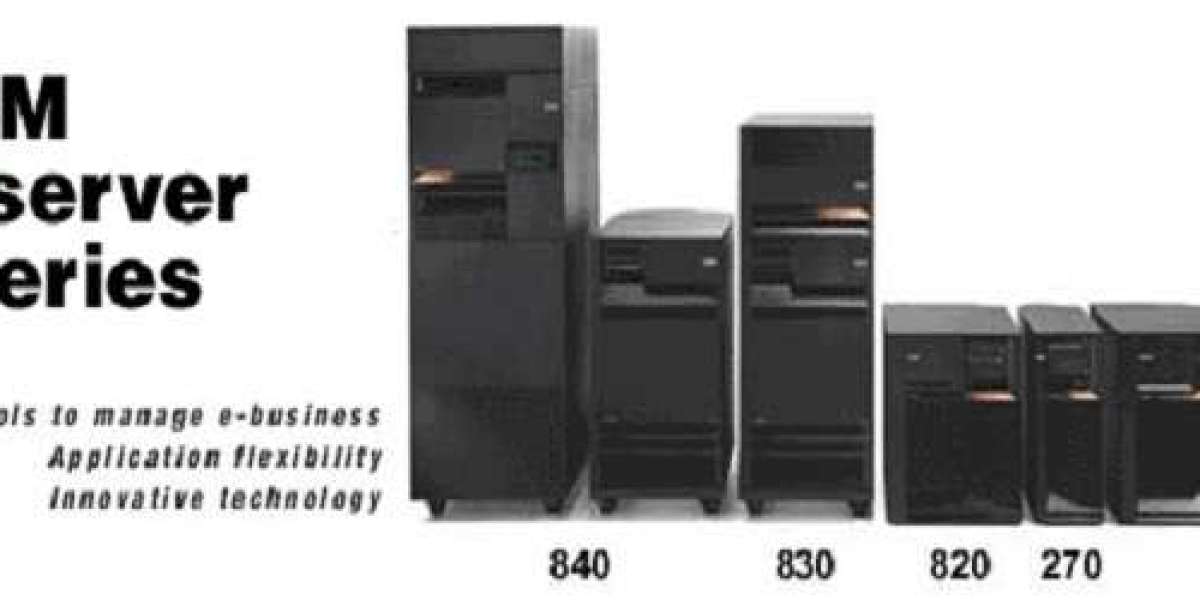The IBM iSeries AS400, first introduced in 1988, has earned its reputation as one of the most reliable, versatile, and enduring computing platforms. Known for its integrated architecture and ability to handle critical business applications, the AS400 remains the backbone of many legacy systems today. Despite technological advancements, businesses across industries continue to rely on this platform for its stability, scalability, and compatibility with older applications. This article explores why the IBM iSeries AS400 is indispensable for legacy systems and how it continues to drive business operations in the modern era.
1. Unmatched Reliability
One of the primary reasons the AS400 has endured as the backbone of legacy systems is its unparalleled reliability. Designed to handle mission-critical applications, the platform provides consistent performance with minimal downtime.
High Uptime
The AS400 is renowned for its ability to run continuously without failure. Many organizations report systems running for years without interruption.Fault Tolerance
The platform is built with redundancy and error-detection features that automatically address issues before they impact operations.
Example
In industries like banking and healthcare, where even a minute of downtime can lead to significant consequences, the AS400 is a trusted solution.
2. Backward Compatibility
Backward compatibility is a standout feature of the AS400, enabling businesses to continue running applications developed decades ago without modification.
Preservation of Legacy Applications
Organizations that rely on custom-built software or older applications can seamlessly run them on modern AS400 systems.Ease of Upgrades
IBM ensures that hardware and software upgrades maintain compatibility with previous versions, eliminating the need for costly rewrites.
Impact
This backward compatibility allows businesses to protect their investments in legacy systems while ensuring operational continuity.
3. Integrated Architecture
The AS400's integrated architecture is another reason it remains the backbone of legacy systems. Unlike traditional platforms that rely on multiple components, the AS400 combines hardware, an operating system (IBM i), a database (DB2 for i), and middleware into a single cohesive unit.
Simplified Management
This integration reduces complexity, as administrators can manage the entire system from a single interface.Enhanced Performance
By integrating the database directly into the system, the AS400 eliminates bottlenecks and optimizes processing speeds.
Example
In logistics, where businesses need to track real-time inventory and shipments, the AS400’s integrated architecture streamlines data management and reporting.
4. Scalability and Longevity
The AS400 is designed to grow with businesses, making it a cost-effective choice for long-term use.
Dynamic Scalability
Companies can add processing power, storage, or memory as needed without replacing the entire system.Decades of Service
Many organizations have used AS400 systems for over 20 years, a testament to their durability and adaptability.
Use Case
Retail businesses that experience seasonal spikes in demand can scale their AS400 systems to handle increased workloads without performance degradation.
5. Security and Compliance
The AS400 has a strong reputation for security, making it a reliable choice for industries that require stringent data protection.
Object-Level Security
The platform’s unique object-based security model provides fine-grained control over access to data and resources.Compliance Features
Built-in auditing and encryption tools help organizations meet regulatory requirements such as GDPR, HIPAA, and PCI-DSS.
Relevance
For financial institutions managing sensitive customer information, the AS400 ensures secure and compliant operations.
6. Support for Legacy Programming Languages
Many legacy applications were built using programming languages such as RPG (Report Program Generator) and COBOL, which remain critical in business operations.
Native Support
The AS400 natively supports these languages, allowing businesses to maintain and enhance their existing software.Modernization Options
While retaining support for legacy languages, the platform also accommodates modern languages like Java and Python, enabling gradual modernization.
Benefit
This dual support ensures that businesses can continue using their legacy applications while preparing for future needs.
7. Versatile Workload Handling
The AS400 is capable of handling a diverse range of workloads, from batch processing to real-time analytics.
ERP and CRM Systems
Many organizations run enterprise resource planning (ERP) and customer relationship management (CRM) systems on the AS400.Data Warehousing
The platform’s robust database capabilities make it ideal for data warehousing and analytics.
Impact
Manufacturers use the AS400 to integrate production schedules, inventory management, and sales tracking into a single system, improving efficiency.
8. Minimal Total Cost of Ownership (TCO)
The AS400’s longevity and reliability contribute to a lower total cost of ownership compared to other platforms.
Reduced Maintenance Costs
The platform’s durability minimizes the need for frequent repairs or replacements.Longevity
Unlike other systems that require regular upgrades, the AS400 can operate effectively for decades with minimal investments.
Financial Advantage
For small to medium-sized businesses, the AS400 offers an affordable way to maintain critical operations without incurring high costs.
9. Industry-Specific Adaptability
The AS400’s versatility makes it suitable for a wide range of industries, including finance, healthcare, manufacturing, and retail.
Custom Solutions
The platform can be tailored to meet the unique requirements of specific industries.Proven Track Record
Over the years, the AS400 has been a reliable backbone for businesses ranging from small enterprises to multinational corporations.
Example
In healthcare, the AS400 powers patient record systems, ensuring secure and efficient data access for medical professionals.
10. Strong Community and Ecosystem
The AS400 benefits from a robust ecosystem of developers, consultants, and third-party providers.
Active User Base
A dedicated community of professionals ensures that businesses can find support and resources when needed.Third-Party Applications
A wide range of compatible applications enhances the platform’s functionality and adaptability.
Support Network
This ecosystem ensures that organizations using the AS400 can access expertise and tools to optimize their systems.
Conclusion
The IBM iSeries AS400 remains the backbone of legacy systems due to its reliability, backward compatibility, and ability to adapt to modern business needs. Its integrated architecture, security features, and support for legacy programming languages make it an indispensable tool for industries that require stability and performance.
For organizations with critical applications and data, the AS400 offers a platform that balances legacy support with future-ready capabilities. By continuing to evolve alongside emerging technologies, the AS400 ensures that businesses can rely on it as a trusted partner in their operations. As technology advances, the AS400 stands as a testament to the enduring value of robust and adaptable systems.





